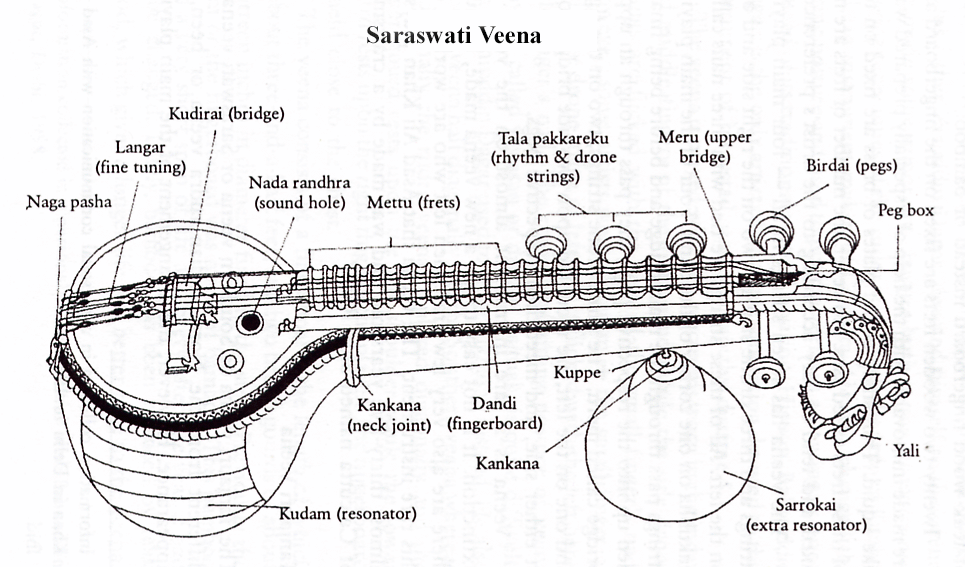Saraswati Veena
Veenas are Indian string instruments that originated around 1700 B.C.E. It was based on the twanging sound produced by archer’s bows, called “vil yazh” and musically referred to as “jya ghosha” in ancient Atharvaveda. Veenas originally meant any stringed instrument, and over time specifications have been added. For instance, this veena is a Saraswati veena, a plucked instrument named after the Hindu goddess Saraswati. It is also called the “tanjauri veena” and in southern India it is one of the most important instruments to this day.
The Hindu goddess Saraswati is worshipped as the goddess of knowledge and speech. She is said to be the mother of the Vedas, the ancient Hindu scriptures. The Saraswati veena is named after her because it is said to be her instrument of choice, and she is often shown to be playing the instrument while sitting upon a swan.

Sources
“Goddess Saraswati.” AstroVed Pedia. Accessed June 22, 2022. https://www.astroved.com/astropedia/en/goddess/saraswathi.
M.S., Abhilash. “Saraswathi Gayatri Mantra Lyrics English Meaning.” Saraswathi Gayatri Mantra Lyrics English Meaning, September 1, 2013. https://www.hindudevotionalblog.com/2008/09/saraswathi-gayatri-mantra-lyrics.html.
“Saraswati Veena.” India Instruments. Accessed June 22, 2022. https://www.india-instruments.com/encyclopedia-saraswati-vina.html.









